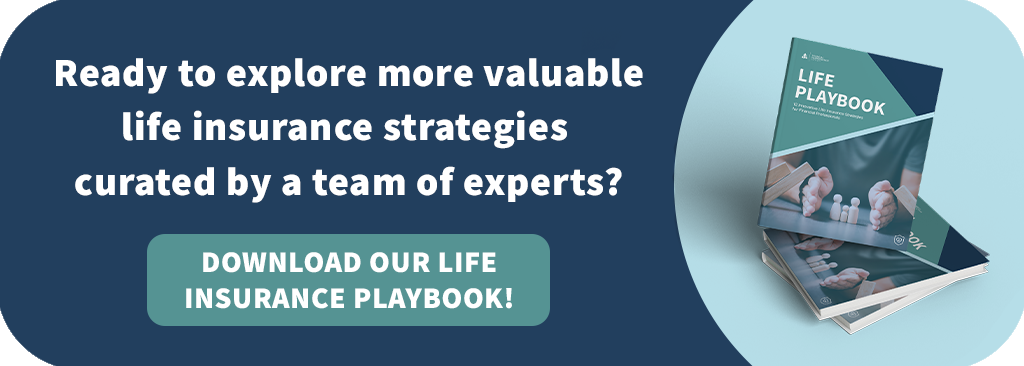Updated August 7, 2024, at 3:39 PM
What The Beatles Might Teach Us About Actuarial Science
Updated indexed universal life (IUL) illustration regulations are upon us!
A long and winding road for regulators and carriers. Will illustrations get even longer? Similar to what John Lennon sings in “Across the Universe,” words and numbers are flowing out like endless rain into a paper cup.
But we’re seeing some shorter illustrations by focusing on a selected index account, along with more conservative projections and better summaries of potential ranges of results. Brief examples without tabular projections may be used to show potential returns and risks beyond conservative assumptions.
Gaps lurk between illustration and administration systems in not tracking plans for:
- Years to pay premiums and how to adjust when needed
- Adjustments to benefit amount and option
- Distribution plans and how to adjust for risk and return changes
Improved policy service is needed to guide results within a reasonable range of what’s illustrated. Otherwise, what’s sold as perm may, in effect, become term and a gamble on dying early in retirement. Or the distribution plans may be at risk of much lower income if not adequately managed and at risk of enormous tax liability due to a lapse with a large loan balance.
Check out my article, Term to Perm Without Backsliding, for more information on this.
With the beneficial tax law change at the start of 2021, new policies will be allowed to pay higher premiums to improve non-guaranteed values and to reduce the risk of not being able to keep the policy as permanent life insurance. Read more about this here.
Related: Finding the Right Indexed Universal Life Insurance Policy
Imagine Sales and Service to Balance Life Costs, Benefits, and Values
John Lennon’s “Imagine” is enchanting, universal, timeless, and thought-provoking. When my wife Peggi sings it, she changes the “no religion” lyric to “pure religion” or “no division.” For the “no heaven” lyric, she adds the thought of no heaven to wait for and an idea of heaven on earth in a brotherhood of man. I hope she passes the audition!
Life insurance has roots in religious and social groups of mutual association. Charity and equity are values of these groups that have become muddled by social disconnection, business myopia, complexity, and lack of balance to changing economics. Term insurance costs for prudent protection are a type of charity by the pool of the living with benefits paid on behalf of insureds who die early. Now you don’t know whom your costs benefit (other than your peace of mind for your potential beneficiaries).
When plans are intended to be permanent, they need equity, balance, and a flexible endowment. New wine was put into old bottles as new flexible sales illustrated policies were administered in old systems and serviced with rigid views of needs and plans.
I invite you now to sing lyrics to imagine a future for life insurance illustrations, plan design, and policy service:
Imagine Illustrations
No pie up in the sky
No lapses lurk below us
No benefit to die
Imagine all the people live with equity
You may say I’m a dreamer
But I’m not the only one
I hope someday you’ll join us
Universally living on
Imagine our transactions
Living life each day
No mask on our donation
To those who pass away
Our social separation requires new equity
You may say I’m a dreamer
But I’m not the only one
I hope someday you’ll join us
Universally living on
Hopefully, these lyrics sparked your imagination. Now let’s look at how the concepts apply to the current illustration regulation and what could be next.
Yesterday and Life Goes On
Since 1982, my career has focused on life insurance illustrations and policy administration, including analysis of policy calculations as well as long-term perspectives of how life insurance works to meet consumers changing needs.
In the 1990s, I served as a technical advisor to the NAIC on the life illustration model regulation and Buyer’s Guide. I’ve given many presentations and written numerous articles on life insurance dynamics. Over the last five years, my focus has been on reviewing in-force policies along with IUL illustrations and design for new business.
In June 2020, I submitted comments to the NAIC IUL Subgroup to provide perspective on future improvements in life insurance disclosure and policy service. AG49 is an actuarial guideline that limits what credit rates and loan leverage can be illustrated. These limits were implemented by December 2020. My comments below give suggestions for how illustrations should change in the future.
Related: What Are the Charges Deducted from Indexed Universal Life Policies? [Infographic]
How Policy Works vs. Comparing Tabular Detail in Illustrations
In the expert comments for AG49, the American Academy of Actuaries highlights that illustrations are intended to show how a policy works and not to compare future performance. The problem is that agents and consumers need to compare how different policies or policy designs work. Comparing projected values is an inevitable step that too often stops short of understanding a range of results and how cost and credit factors affect the projections.
The key purpose of the numeric summary signed by the agent and consumer is to show a range of results from guaranteed to midpoint to current assumption. Although illustrations are often lampooned as not being correct soon after running, this perception comes from focusing on projected values in one scenario rather than a range of results. A problem with the numeric summary is that the range is typically limited to age 70 or 20 years and a projected lapse age.
Illustrations now go beyond 100 to age 121 or higher, and a key-value comparison is projected income from loans or withdrawals after an accumulation phase. These projected income amounts aren’t shown in the numeric summary.
The income projections are the values most affected by AG49, particularly with leveraged loans, multipliers, or other factors that illustrate large gains. The illustrations typically don’t show how years with no index credits or low credits would have losses in net cash value even without considering insurance costs.
Conservative Projections vs. Encouraging and Servicing Innovation
The independent experts and others rightly favor conservative projections to temper expectations of IUL income and other values shown in the tabular detail. The IUL Coalition also rightly notes the need to encourage innovation and consistently service in-force policies based on the client’s designs.
A way to balance these contrasting perspectives is to recognize that the tabular detail projection with a steady credit rate is particularly ill-suited to show how these innovative products work. These products have a substantial sequence of rates effects and liquidity issues related to years of losses in net cash value from factors other than insurance costs.
Supplemental Report of Key Year
The IUL Subgroup considered whether sequence of rates and a range of projected income and other values should be required additions to illustrations. These approaches would help show how the policy works. While requiring these additions was tabled, carriers do have the option to add these as supplemental pages.
Consider how these effects could be shown for products with multipliers and other factors that can create a significant loss in net cash value in any year, as well as substantial leveraged gains. These concepts could be effectively shown in a one-year example rather than in tabular detail.
The illustration model regulation defines an illustration as a projection beyond one year. So, a one-year example should be allowed to show how credits greater than the AG49 limit may occur, along with what happens if there’s no index credit.
Related: Q&A: Life Insurance Policy Reviews
If companies start to use this approach, future NAIC reviews could set guidelines to optimize how this would help show how policies work and what policy service will be needed.
A good year to show with IUL income projections is when income starts. This would show what policy changes need to be made and a range of results that could occur. This focus also ties into policy service concerns.
Even more important is the year when the policy would first qualify for overloan protection to show what could be needed with either policy changes or loan repayments to avoid large taxable gains on a lapse. If overloan security isn’t an option, a suggestion is to show the year when the policy would need loan repayments if there were two years of no index credits.
Case Study Example
Here’s a conceptual example with multipliers and leveraged loans:
- An IUL illustration with multipliers used to project $45,000 annual income from age 65 to age 121.
- Using a sequence of rates such as a 0% every four years followed by three years to average the AG49 maximum rate, the annual income projection is $42,000.
- AG49 now prevents multipliers from showing higher value than without multipliers. Without multipliers, the projected income would be $30,000. If neither multipliers nor leveraged loans were used, the projected income is $20,000. One of these scenarios would be in the tabular detail of the basic illustration.
- A one-year supplemental example with multipliers and leveraged loans could show that overloan protection would be projected at age 82 (before the end of the policy year when any index credits would be posted).
- If the overloan protection is invoked, then the cash value at the end of the year would be $66,000. If not invoked and the AG49 maximum credits were added, the cash value would be $300,000. The example could show that credit rates could be higher and also that a 0% credit would mean that loan repayments would be needed the next year.
A one-year supplemental report would better show how the policy works and what future policy service would be needed. It can help the client and agent understand the sequence of rates effects and liquidity risks. Income projected for life, in this case, may need to stop at age 82. Using a more conservative projection, income continuing has a higher likelihood of occurring.
In this example, if overloan protection isn’t available, the multipliers and leveraged loans would mean that the policy would need a limit of about 80% loan to value to avoid loan repayments for two years of no index credits.
Range of Results and Decreased Prominence of Guaranteed Factors
This supplemental example also shows how guaranteed factors could affect the policy in the future. Since the illustration model was adopted in the 1990s, guaranteed factors have become less prominent. When adopted, illustrations had guaranteed minimums of 4% and didn’t go past age 100.
Also, illustrations typically had fewer pages for non-guaranteed elements. With guaranteed scenarios showing 0%, max insurance costs, and, if applicable, asset charges, the scenario is a black swan that’s unlikely to occur. Projections of income to age 121 have changed the focus and new approaches are needed.
Policy service needs to track illustration designs and harmonize actual performance with these goals and policy adjustments to premiums and benefits. All types of universal life plans need these adjustments to truly be permanent insurance. We need to guide policies from protection before retirement to life insurance as an asset in retirement. Sold as perm. Serviced as perm.
And In The End…
Across the universal life, we can change our world.
Will you still need me, will you still feed me when I’m 84? Start adjustments at 64? Help!
You need money and face the taxman. Or all you need is love?
How will my life come together as people and lives to be remembered?
Life goes on! Imagine!
Keep Reading: When I’m 64: Guidance for Life Insurance In or Near Retirement
The content within this post is for educational purposes only and does not represent legal, tax or investment advice. Customers should consult a legal or tax professional regarding their own situation. This presentation is not an offer to purchase, sell, replace, or exchange any financial product. Insurance products and any related guarantees, features and/or benefits are backed by the claims paying ability of an insurance company. Insurance policy applications are vetted through an underwriting process set forth by the issuing insurance company. Some applications may not be accepted based upon adverse underwriting results.


